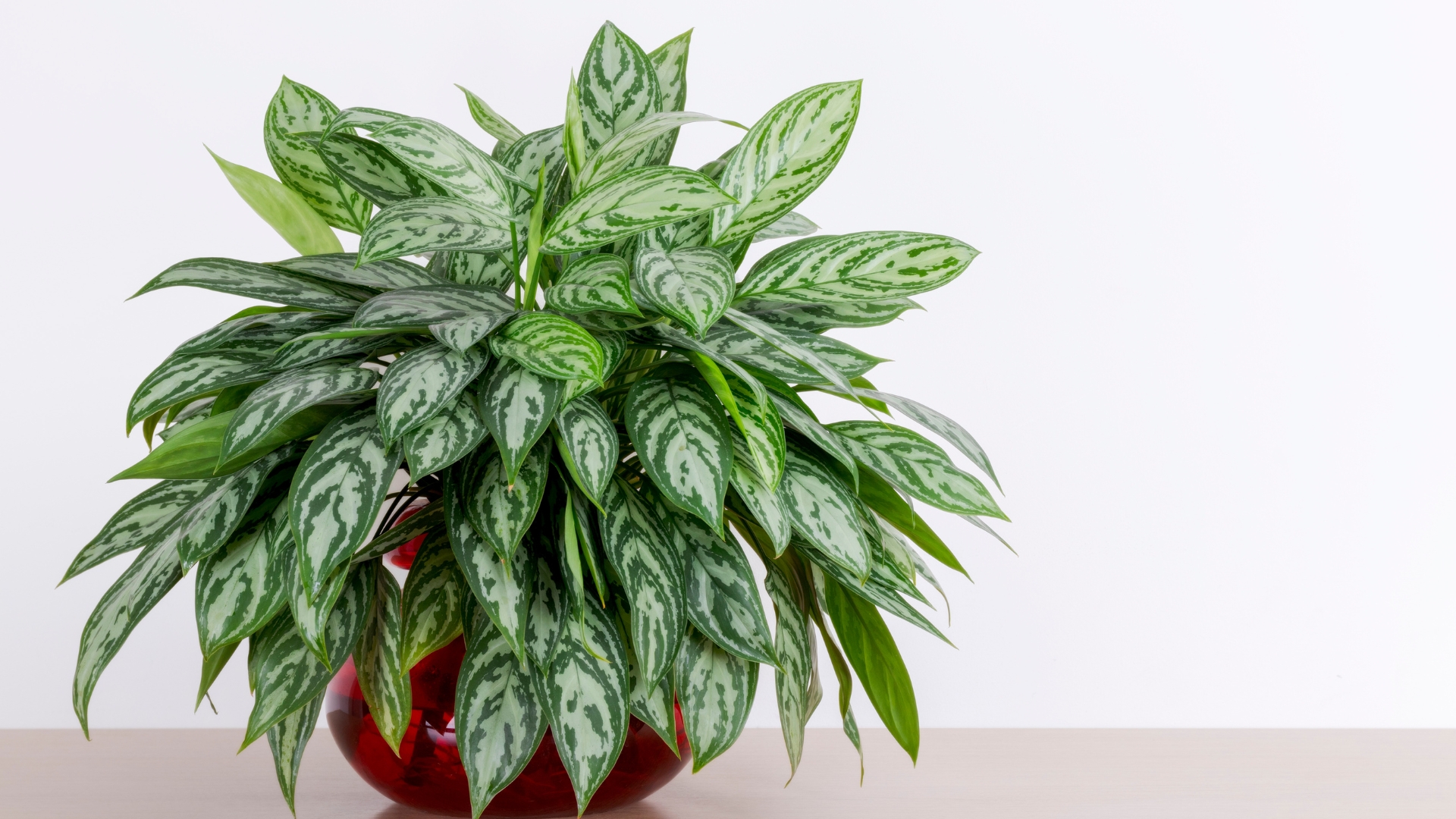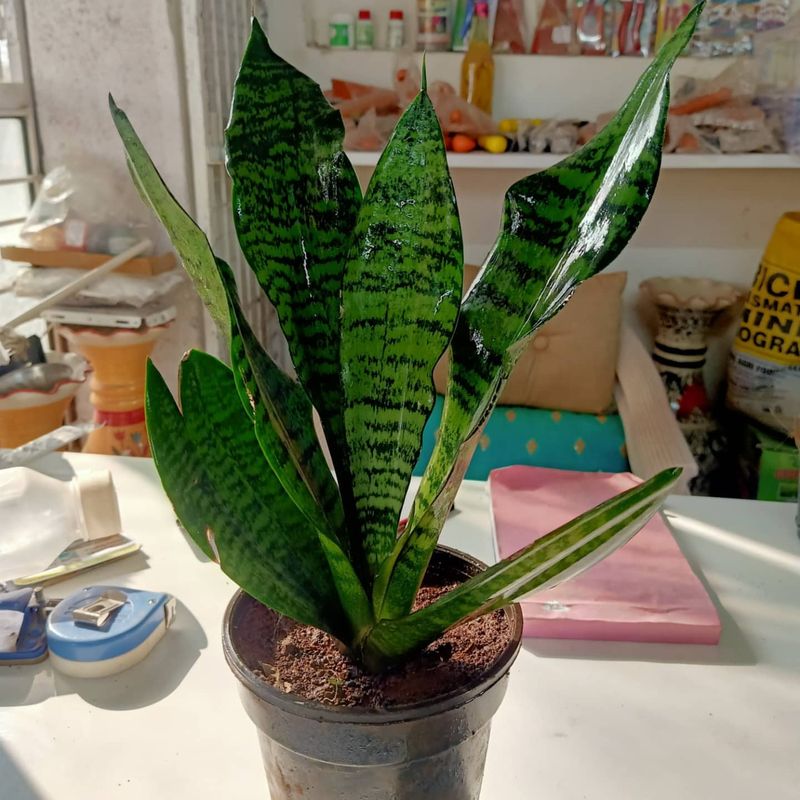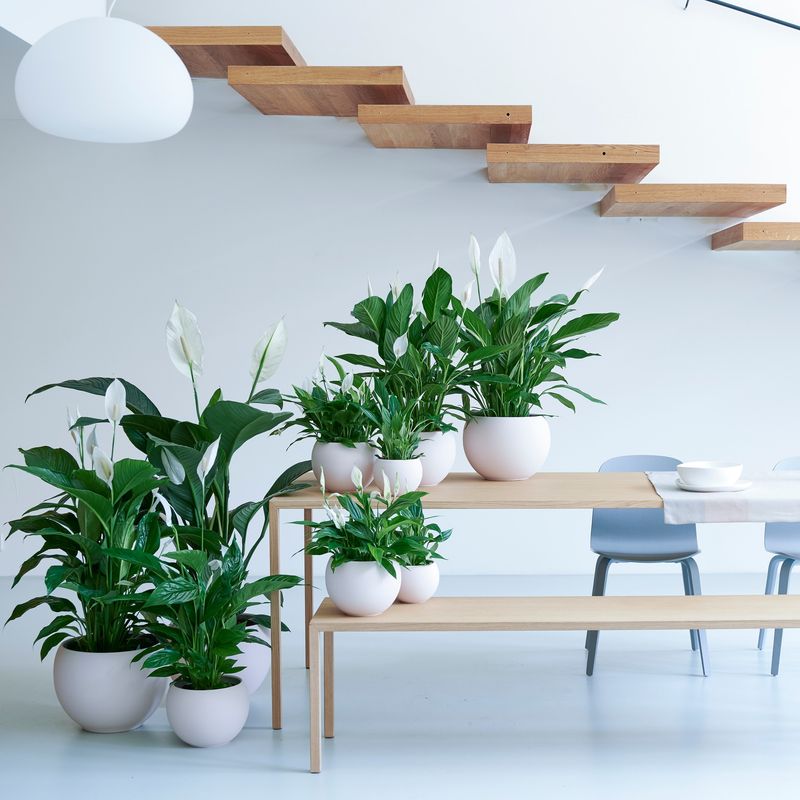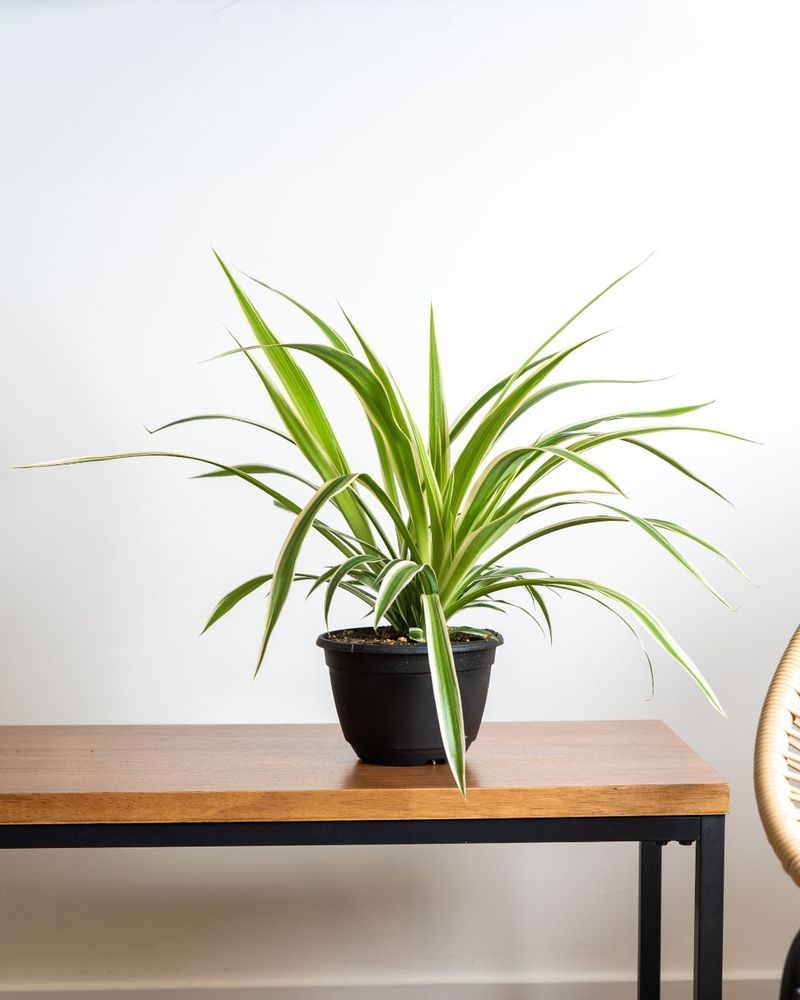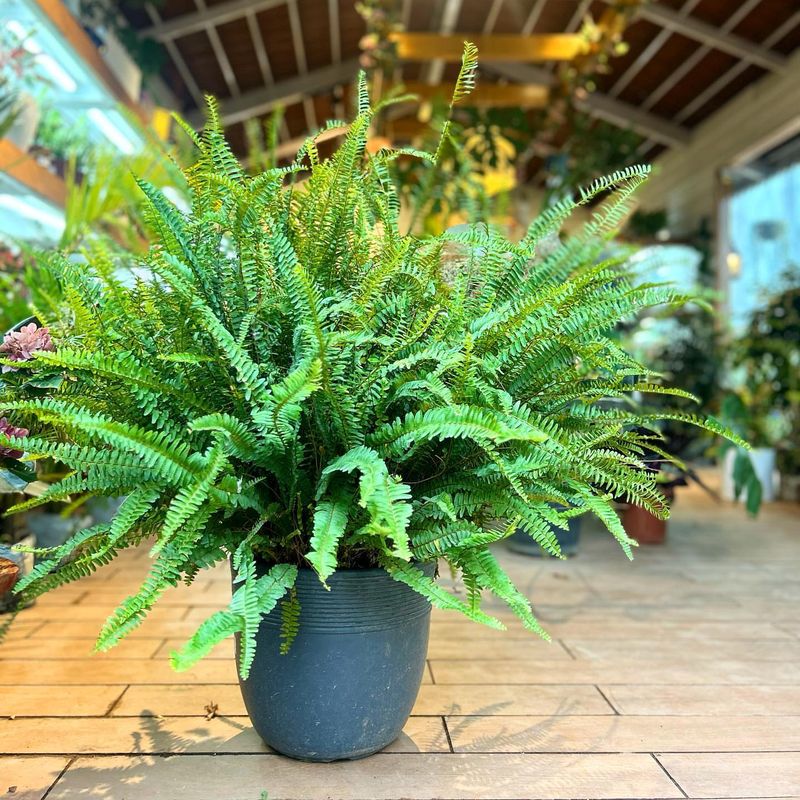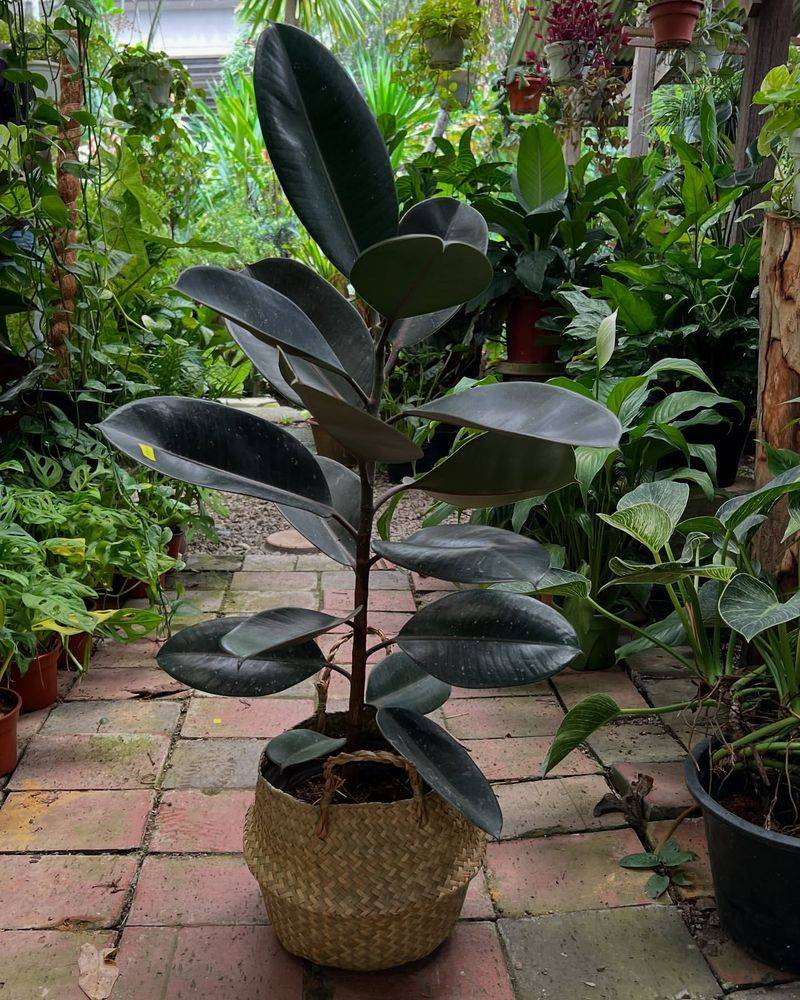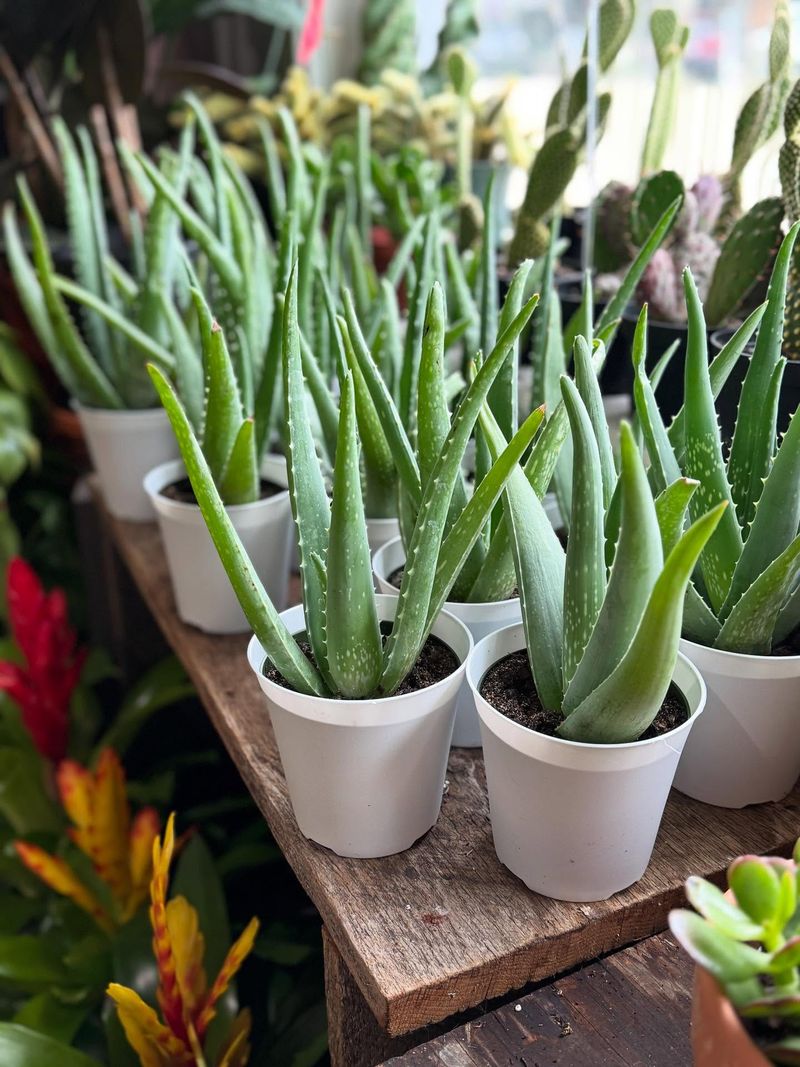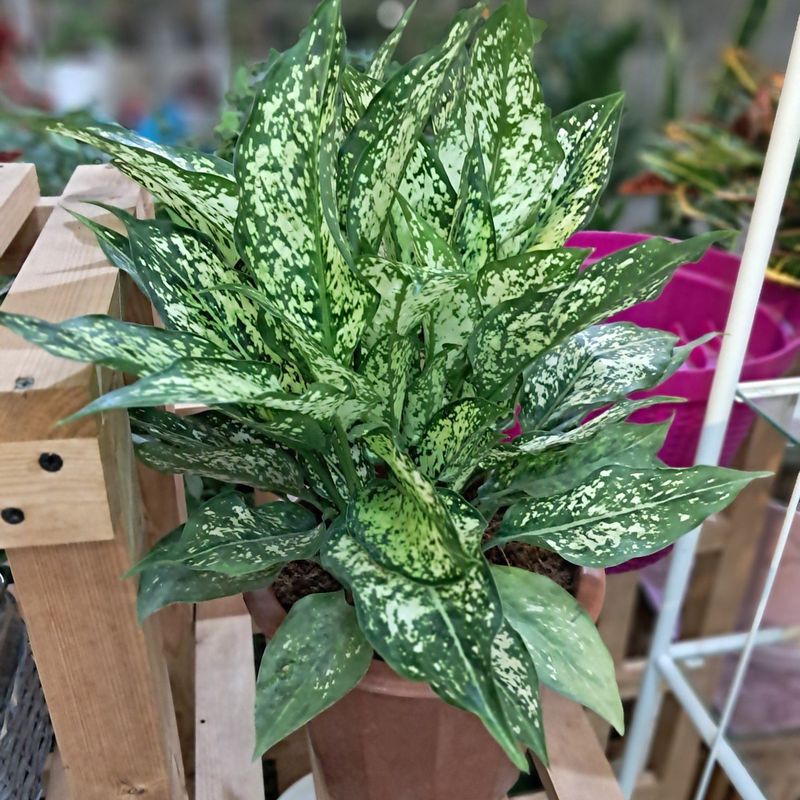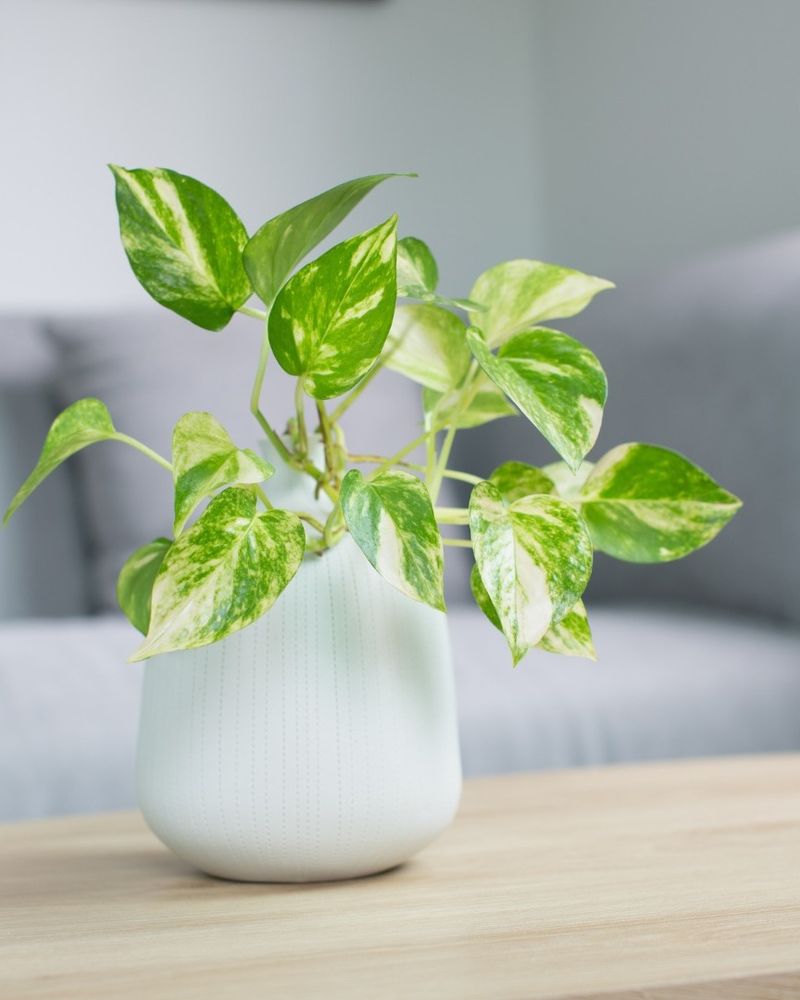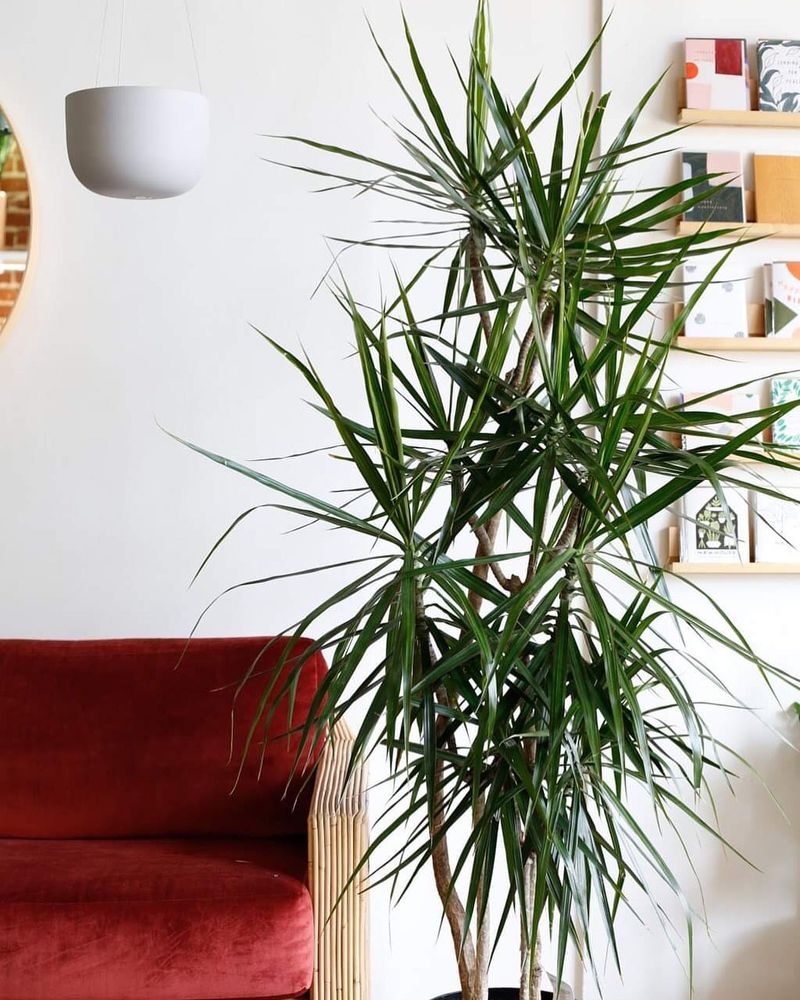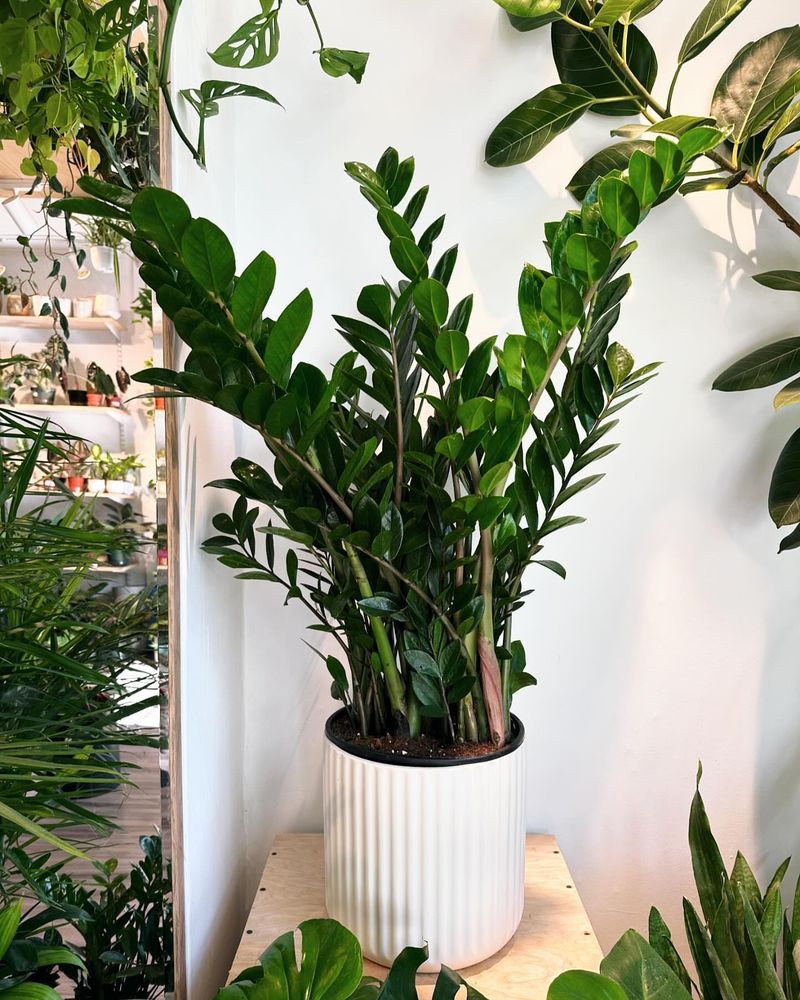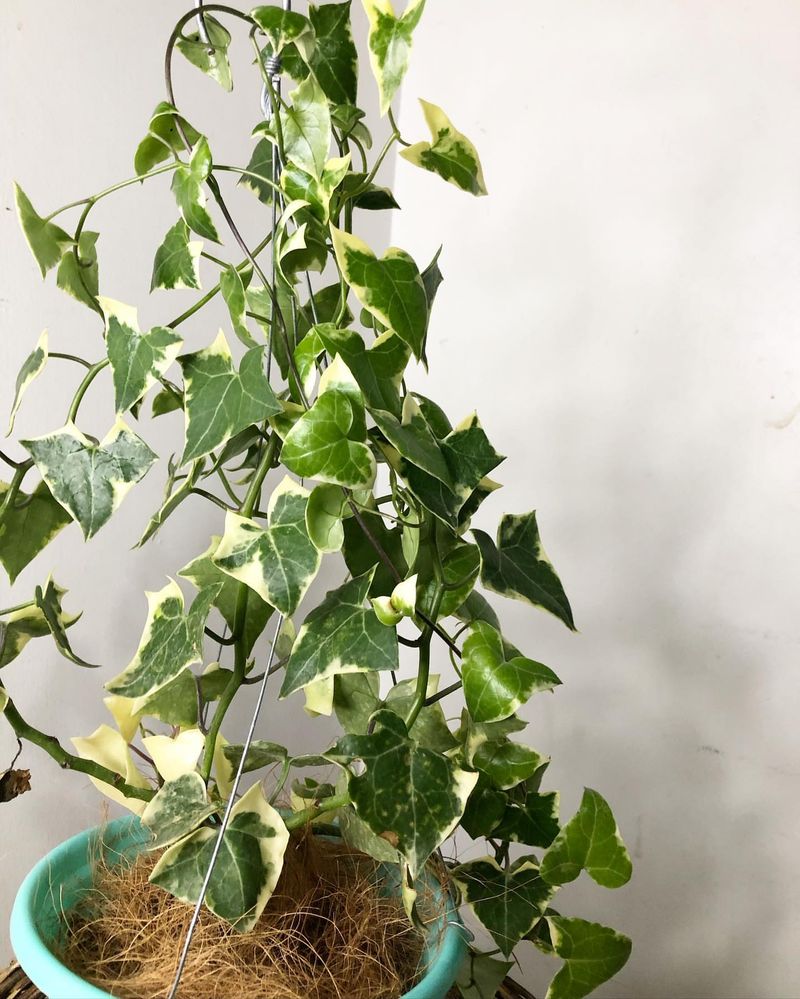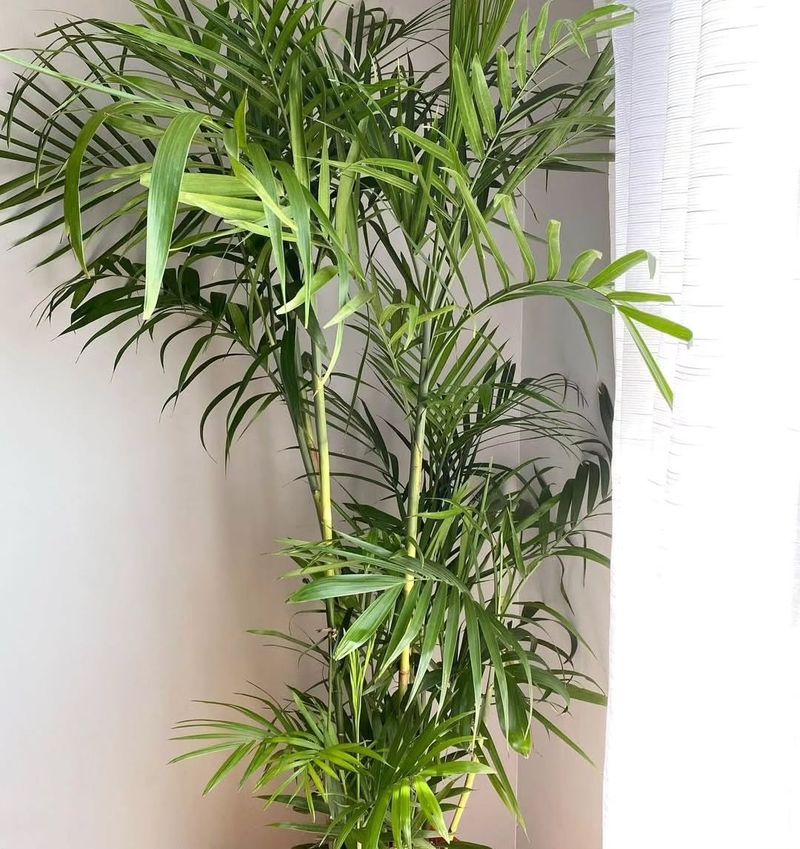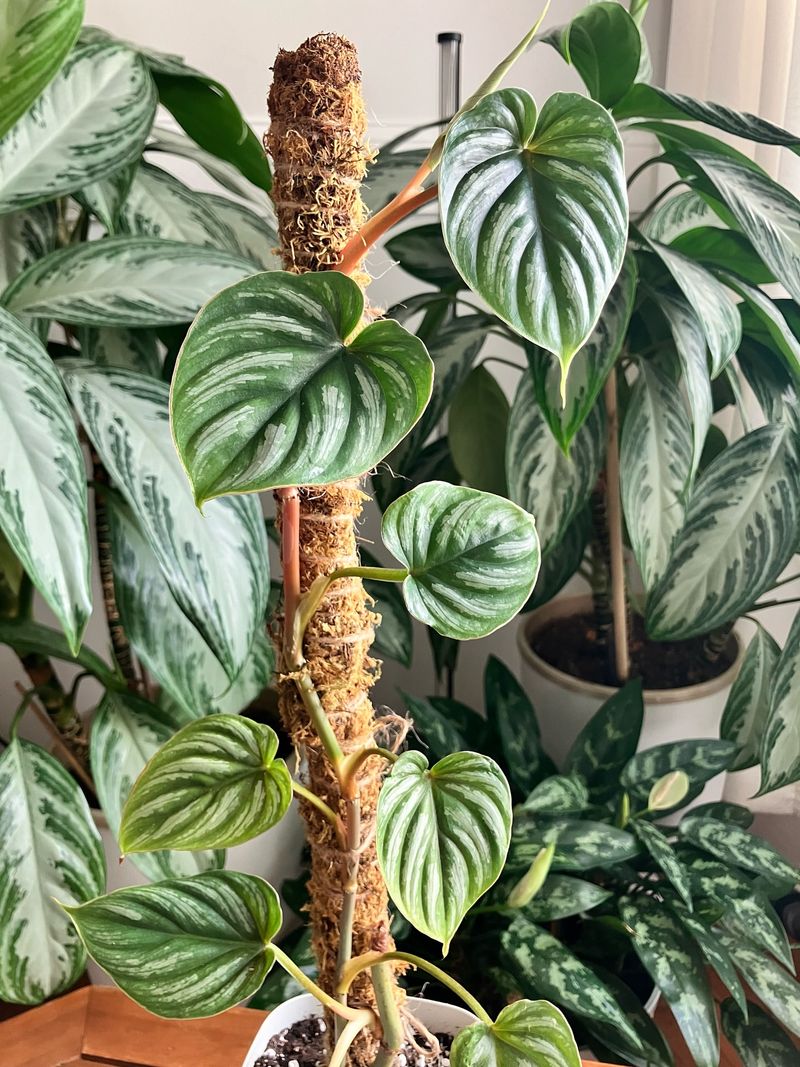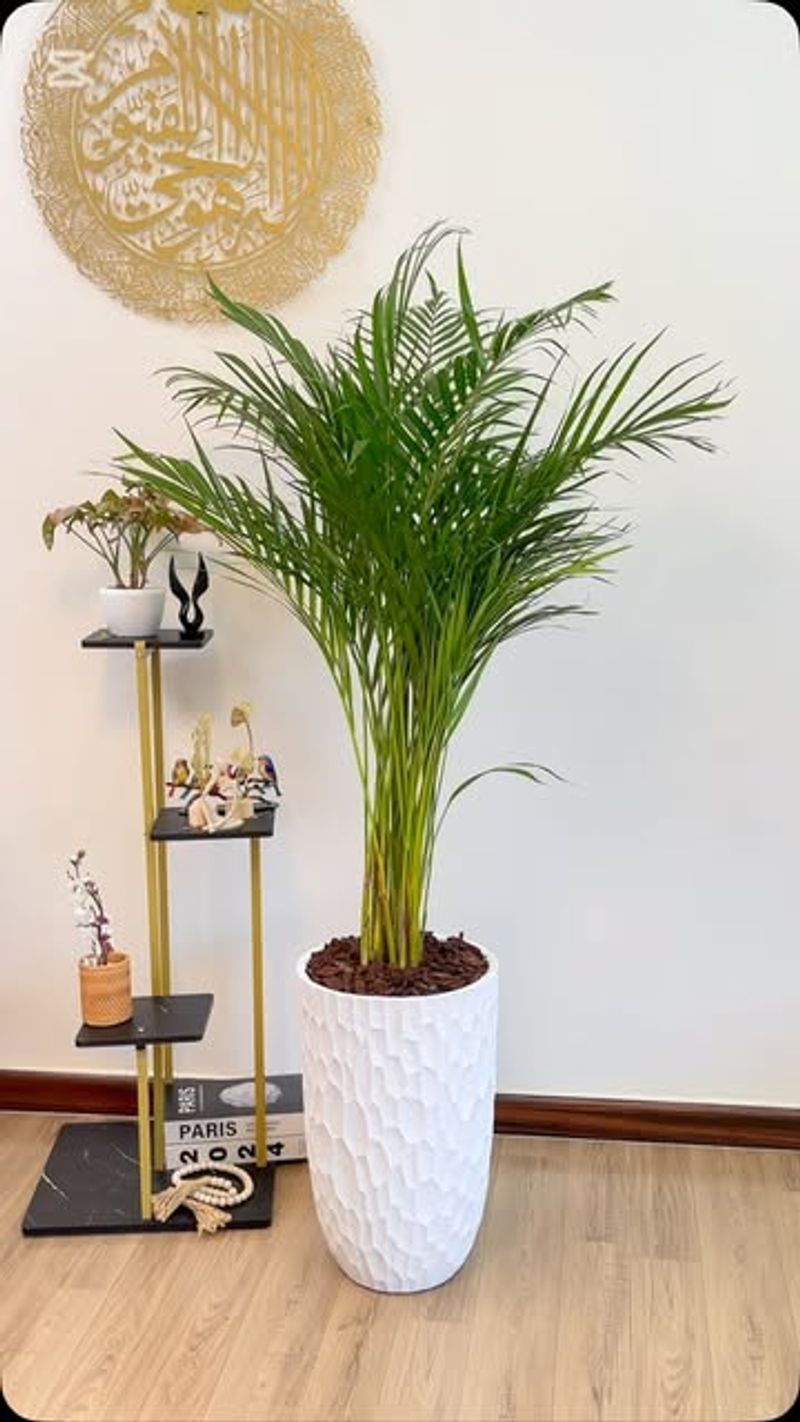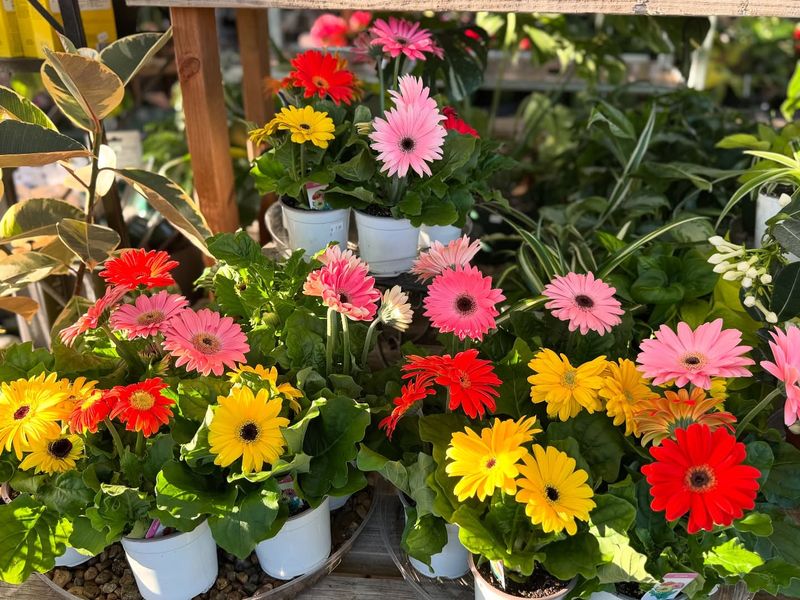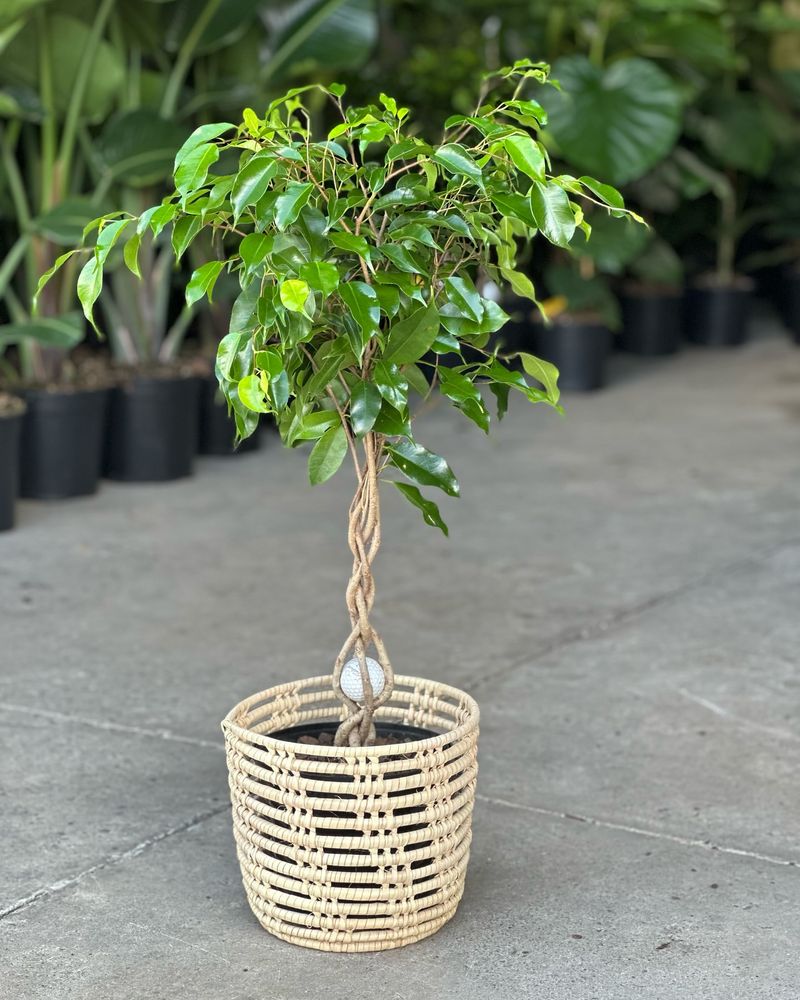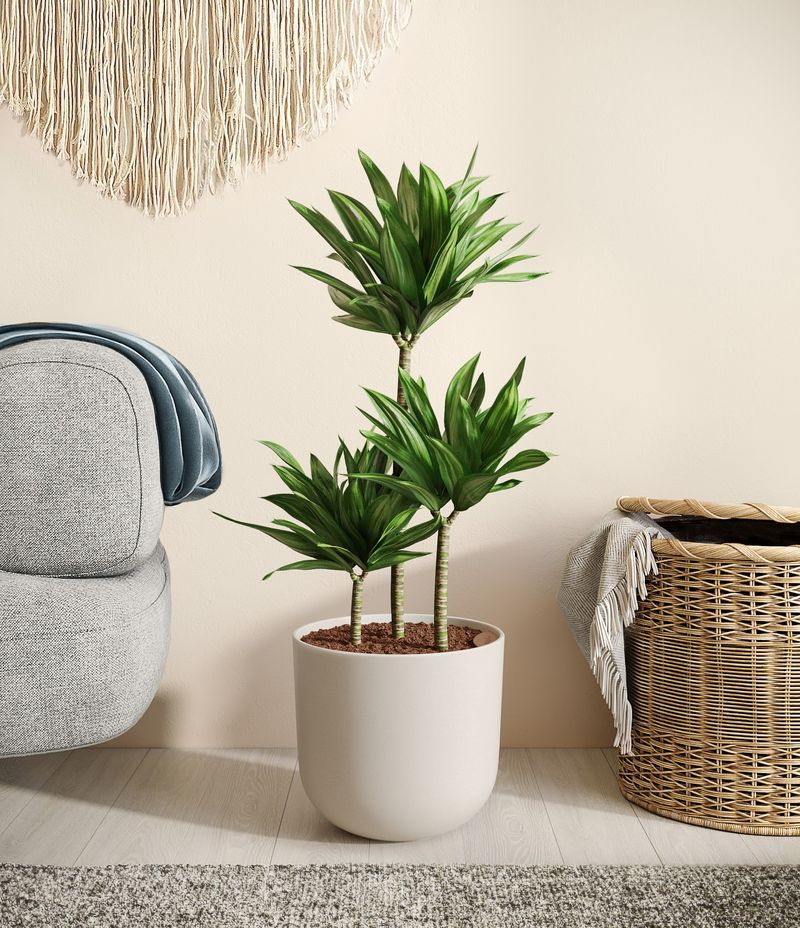Some plants do more than sit pretty—they clean the air, trap dust, and ask almost nothing in return. These 17 low-maintenance houseplants are natural air purifiers that help create a fresher, healthier home without the extra work.
Just a little light, the occasional drink, and they’ll quietly pull their weight while making your space greener and cleaner.
1. Snake Plant (Sansevieria)
NASA research shows Snake Plants are champion air purifiers, removing toxins like formaldehyde and benzene while you sleep. Their tall, striking leaves have waxy surfaces that trap dust particles before they can spread around your home.
Water them just once every 2-3 weeks and place in indirect light. These tough plants survive in almost any indoor condition and actually prefer being slightly neglected rather than overwatered.
2. Peace Lily (Spathiphyllum)
Elegant white blooms rise above glossy green leaves, making Peace Lilies both beautiful and functional. Their leaves and roots work together to reduce mold spores in the air – perfect for bathrooms and damp spaces.
Watch for drooping leaves as a signal to water, usually once a week. Peace Lilies thrive in low to medium light and help remove common household toxins like ammonia from cleaning products.
3. Spider Plant (Chlorophytum comosum)
Arching striped leaves send out baby plantlets that dangle like spiders on a web, giving this plant its playful name. Spider plants remove carbon monoxide and xylene while producing oxygen at impressive rates. Hang them in a basket where their cascading form can catch dust particles that float through the air.
Nearly impossible to kill, they bounce back from almost any neglect and produce babies you can snip off to grow new plants.
4. Boston Fern (Nephrolepis exaltata)
Lush feathery fronds make Boston Ferns natural air humidifiers and purifiers. Their delicate leaves have tiny hairs that trap dust particles while releasing moisture into dry indoor air. Mist occasionally and keep soil slightly damp.
Boston Ferns love bathrooms where shower steam provides the humidity they crave. Place them away from heating vents that can dry out their fronds too quickly.
5. Rubber Plant (Ficus elastica)
Glossy, leathery leaves stand out with their rich burgundy-green color and ability to shine up a room. Rubber plants excel at filtering formaldehyde from furniture and carpets while their broad leaves create perfect dust-trapping surfaces.
Wipe leaves occasionally with a damp cloth to keep them dust-free and shiny. These sturdy plants grow into impressive indoor trees with minimal care, needing water only when the top inch of soil feels dry.
6. Aloe Vera
Beyond its famous healing gel, Aloe Vera quietly cleans benzene and formaldehyde from the air. The spiky succulent stores water in its thick leaves, making it incredibly drought-resistant. Place in a sunny window and forget about it for weeks at a time.
When soil is completely dry, give it a good soak. Aloe plants reproduce by growing baby plants you can separate and pot up – perfect for sharing with friends.
7. Chinese Evergreen (Aglaonema)
Patterned leaves in silver, green, and pink make Chinese Evergreens as decorative as they are hardworking. NASA studies found they effectively remove multiple air pollutants while tolerating poor light conditions.
Low maintenance to the core, these plants thrive in offices with fluorescent lighting. Water sparingly and avoid cold drafts. Chinese Evergreens grow slowly, requiring little pruning or repotting, making them perfect for busy plant parents.
8. Pothos (Epipremnum aureum)
Nicknamed “Devil’s Ivy” because it’s nearly impossible to kill, Pothos vines drape beautifully from shelves and bookcases. Their heart-shaped leaves come in green, golden, or marbled varieties that trap dust while filtering formaldehyde.
Forgiving of irregular watering and low light, Pothos can revive from severe neglect. Trim occasionally to prevent legginess and place cuttings in water to grow new plants within weeks – a perfect first houseplant for beginners.
9. Dracaena (Dracaena marginata)
Sword-like leaves radiate from thin woody stems, creating an architectural statement that removes xylene and trichloroethylene from indoor air. Dracaenas grow slowly into small indoor trees with minimal attention. Brown leaf tips signal too much fluoride in tap water – try using filtered water instead.
These plants prefer being slightly root-bound, so repotting is rarely needed. Dracaenas thrive in average home conditions and can live for decades with basic care.
10. ZZ Plant (Zamioculcas zamiifolia)
Glossy, dark green leaves grow from thick rhizomes that store water, making ZZ plants virtually indestructible. Their waxy leaf surface repels dust naturally while removing xylene and toluene from the air. Famous for surviving months without water, ZZ plants thrive on neglect.
They tolerate low light and rarely need fertilizer. Perfect for frequent travelers or forgetful gardeners, these plants maintain their polished look with almost no maintenance.
11. English Ivy (Hedera helix)
Research shows English Ivy reduces airborne mold by up to 60%, making it especially valuable for allergy sufferers. The trailing vines with pointed leaves create beautiful cascades from hanging baskets or climbing up trellises.
Keep soil consistently moist but not soggy. Ivy prefers cooler temperatures and moderate light. Regular misting helps prevent spider mites that can sometimes plague these plants, but otherwise they require little special attention.
12. Bamboo Palm (Chamaedorea seifrizii)
Feathery fronds create a tropical vibe while silently filtering formaldehyde, benzene, and carbon monoxide. Bamboo palms add humidity to dry indoor air, helping prevent respiratory irritation during winter months.
Unlike some finicky palms, these adaptable plants tolerate low light and average home conditions. Water when the top inch of soil feels dry. Growing to 4-7 feet tall, bamboo palms make excellent room dividers or corner specimens.
13. Philodendron
Heart-shaped leaves on vining varieties or dramatic split leaves on upright types make philodendrons both beautiful and efficient air cleaners. Their ability to absorb formaldehyde makes them particularly valuable in homes with new furniture.
Adaptable to most indoor conditions, philodendrons tell you when they need water by slightly drooping their leaves. They recover quickly from occasional neglect and can thrive for years in the same pot.
14. Areca Palm (Dypsis lutescens)
Graceful feathery fronds atop multiple slender stems create a statement piece that efficiently removes toxins while adding moisture to dry air. Areca palms ranked among the top air-purifying plants in NASA’s famous Clean Air Study.
Water when the top inch of soil feels dry and provide bright, indirect light. Yellow leaf tips often indicate over-watering or too much direct sun. A mature areca palm can remove nearly a gallon of air pollutants yearly.
15. Gerbera Daisy (Gerbera jamesonii)
Cheerful blooms in vibrant colors sit atop dark green leaves that work overtime removing benzene and trichloroethylene from indoor air. Unlike most flowering plants, gerbera daisies are effective air purifiers even when not in bloom.
Place in bright light and keep soil evenly moist. After flowers fade, continue growing for their air-cleaning foliage. Though not as long-lived as some houseplants, their combination of beautiful blooms and air-purifying ability makes them worth the extra attention.
16. Weeping Fig (Ficus benjamina)
Graceful trees with glossy leaves and slender trunks, weeping figs excel at filtering particulates from the air. Their dense foliage creates an effective dust trap that improves indoor air quality significantly. Keep in consistent conditions as they dislike being moved.
Water when the top inch of soil dries out. Though they can drop leaves when stressed, established plants become more resilient over time and can grow into beautiful indoor trees.
17. Janet Craig Dracaena (Dracaena deremensis)
Clusters of dark green, strap-like leaves form rosettes on thick canes, creating an architectural plant that removes formaldehyde, benzene, and trichloroethylene. Janet Craig dracaenas grow slowly but can reach impressive heights indoors.
Tolerant of low light and irregular watering, these plants thrive in average home conditions. Their ability to adapt to office environments with fluorescent lighting makes them popular workplace plants. Dust leaves occasionally to maintain their air-cleaning efficiency.

